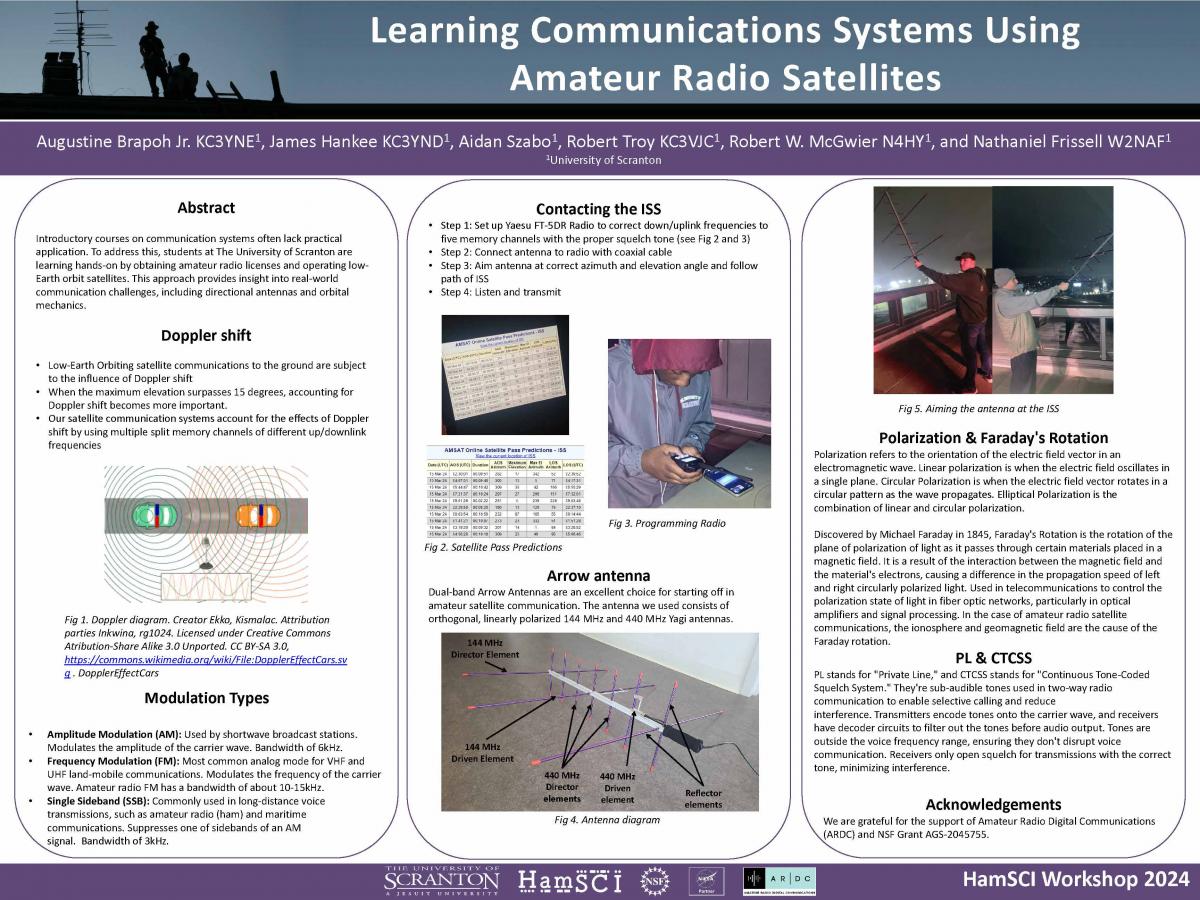| Title | Learning Communications Systems Using Amateur Radio Satellites |
| Publication Type | Conference Proceedings |
| Year of Conference | 2024 |
| Authors | Brapoh, A, Hankee, J, Szabo, A, Troy, R, McGwier, RW, Frissell, NA |
| Conference Name | HamSCI Workshop 2024 |
| Date Published | 03/2024 |
| Publisher | HamSCI |
| Conference Location | Cleveland, OH |
| Abstract | Introductory undergraduate classes on communication systems for electrical engineers typically include theoretical treatments of signals and systems, spectral analysis, modulation, noise, filtering, and digital techniques. While theory is extremely important and useful, a purely theoretical treatment of Communications Systems can leave students without a strong intuition of the practical application of these topics. In the past, it might reasonably be expected that students might have some of this intuition from listening to analog AM and FM radio in the car, or using license-free two-way communication systems such as FRS or CB radios. These systems all expose noise, the need for filtering, and other underlying communications systems concepts to the end user. However, due to the advanced nature of modern digital communications, many of these underlying factors are now effectively hidden. To develop a hands-on intuition communications systems topics, students in the Spring 2024 EE 451 Communications Systems class at The University of Scranton are earning their amateur radio licenses learning to operate low-Earth orbit (LEO) Amateur Radio Satellites. In addition to the communications topics discussed above, these students also gain first-hand experience with directional antennas, polarization, Doppler shift, and basic orbital mechanics. In this presentation, students from the EE 451 class explain the basics of communicating through amateur satellites and discuss what they have learned so far. |
| Refereed Designation | Non-Refereed |
| Full Text |

